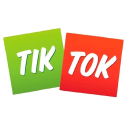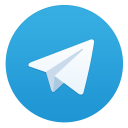How We Built A $12.5K/Month Business Helping Clothing Brands Innovate Their Digital Spaces With 3D Models
Hello! Who are you and what business did you start?
Hi! My name is Marina Martianova, and I’m the founder and CEO of Seamm, a U.S.-based startup that is the first to create digital twins of real-world fashion collections for virtual worlds.
The platform bridges the gap between real-world fashion and virtual worlds, empowering users to fully express their identity in every reality. It serves as a premier partner and gateway for brands seeking to be virtually represented.
Key features include the ability to add physical apparel to a user's digital wardrobe, easy transfer of outfits to a variety of video games and metaverses, and a marketplace with purchase and trade functionality.
One of the key features of Seamm is the use of phygital QR codes for real-world purchases. These codes allow customers to obtain digital copies of their physical items as well as verify that they have not bought a fake.
With Seamm, brands can track consumer preferences and shopping habits no matter where the purchase is made, allowing for a more personalized approach and improved performance.
Since launching in early December, we have already onboarded six brands: Outsiders...

Download the report and join our email newsletter packed with business ideas and money-making opportunities, backed by real-life case studies.

Download the report and join our email newsletter packed with business ideas and money-making opportunities, backed by real-life case studies.

Download the report and join our email newsletter packed with business ideas and money-making opportunities, backed by real-life case studies.

Download the report and join our email newsletter packed with business ideas and money-making opportunities, backed by real-life case studies.

Download the report and join our email newsletter packed with business ideas and money-making opportunities, backed by real-life case studies.

Download the report and join our email newsletter packed with business ideas and money-making opportunities, backed by real-life case studies.

Download the report and join our email newsletter packed with business ideas and money-making opportunities, backed by real-life case studies.

Download the report and join our email newsletter packed with business ideas and money-making opportunities, backed by real-life case studies.






















